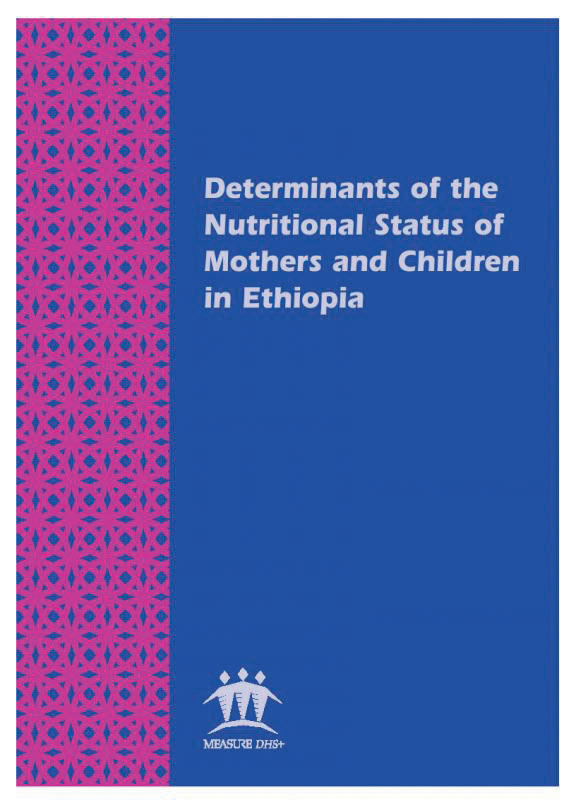- PUBLICATIONS
- JOURNAL ARTICLES
- ACCESS PUBLICATIONS
Publications Summary
- Document Type
- Further Analysis
- Publication Topic(s)
- Gender
- Country(s)
- Ethiopia
- Survey
- Ethiopia DHS, 2000
- Language
- English
- Recommended Citation
- Girma, Woldermariam and Timotiows Genebo. 2002. Determinants of the Nutritional Status of Mothers and Children in Ethiopia. DHS Further Analysis Reports No. 39. Calverton, Maryland, USA: ORC Macro.
- Download Citation
- RIS format / Text format / Endnote format
- Publication Date
- November 2002
- Publication ID
- FA39
Download
 Determinants of the Nutritional Status of Mothers and Children in Ethiopia (PDF, 249K)
Determinants of the Nutritional Status of Mothers and Children in Ethiopia (PDF, 249K)
Download this publication
There is no printed copy available to order.
